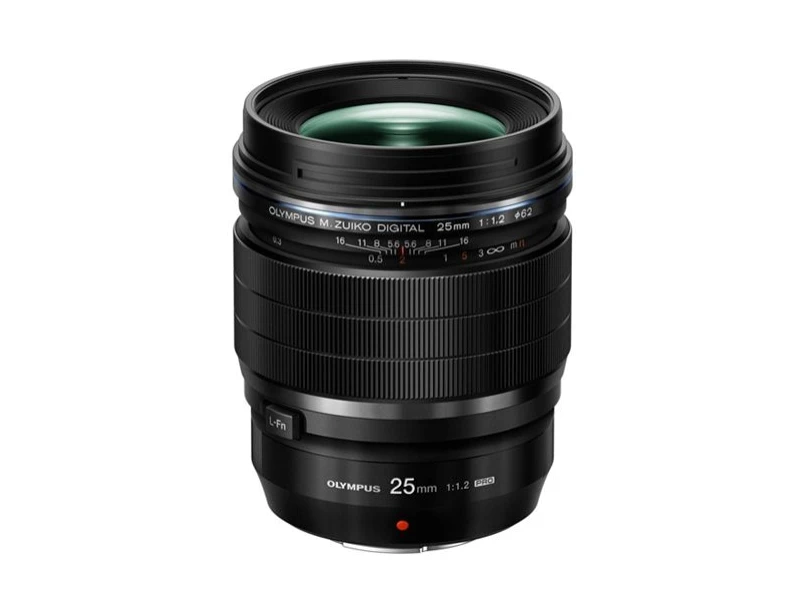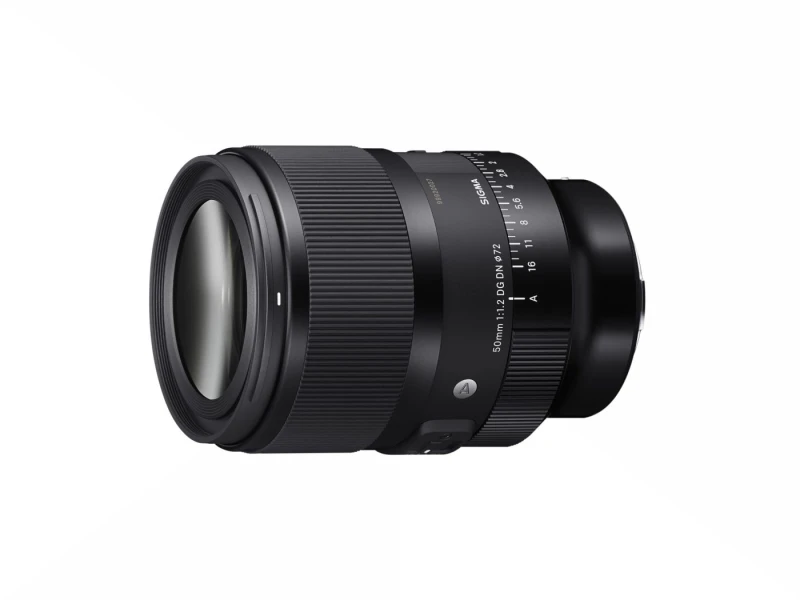Olympus M.Zuiko Digital ED 25mm F1.2 Pro vs Sigma 50mm f/1.2 DG DN Art Sony
Olympus M.Zuiko Digital ED 25mm F1.2 Pro vs Sigma 50mm f/1.2 DG DN Art Sony
When comparing Sigma 50mm f/1.2 DG DN Art Sony and Olympus M.Zuiko Digital ED 25mm F1.2 Pro, which one is better?
1. Lens Weight Comparison
Regarding the weight of the lenses, Olympus M.Zuiko Digital ED 25mm F1.2 Pro is the winner with a weight of 410 g compared to the 740 g that Sigma 50mm f/1.2 DG DN Art - Sony weighs.
Winner: Olympus M.Zuiko Digital ED 25mm F1.2 Pro
Regarding weight: The weight of a lens is something you need to consider, since you have to carry it around on the camera as long as you're shooting. It adds to the total weight of your camera and it's important to keep the weight low if you get tired in your arms when taking photographs or filming.
2. Lens Mount Comparison
The lenses each feature different lens mounts — the Olympus M.Zuiko Digital ED 25mm F1.2 Pro features a Micro Four Thirds while the Sigma 50mm f/1.2 DG DN Art - Sony features a Sony E — and because of this the preference varies. If you have a compatible camera, then of course that lens will be a better choice for you.
Winner: Tied — It depends on your gear
Regarding lens mount: Popular lens mounts are Canon RF and EF, Micro Four Thirds and Nikon Z. Different lens mounts lets you connect different lenses to camera bodies, but some might not be compatible. This can be helped by using an adapter, like a Canon EF to RF adapter.
3. Largest Aperture Comparison
Both lenses share the same aperture of 1.2 — this means that you may buy both Olympus M.Zuiko Digital ED 25mm F1.2 Pro and Sigma 50mm f/1.2 DG DN Art - Sony in this regard; they''re the same.
Winner: Tied
Regarding largest aperture: A lower aperture number means that the widest aperture on the lens is larger. This means that more light will hit the sensor and also that the depth of field will be shallower, better separating your subject from the background.
4. Anamorphic Comparison
Neither Sigma 50mm f/1.2 DG DN Art - Sony or Olympus M.Zuiko Digital ED 25mm F1.2 Pro are anamorphic lenses.
Winner: Tied — Neither have this feature
Regarding anamorphic: Anamorphic lenses are usually used on cinema cameras and squeezes the image when its recorded, which gives the final, stretched out, image oval bokeh and a different angle of view. The most common lenses, however, are not anamorphic but spherical, which gives a spherical bokeh and is a much cheaper lens design.
5. Focus Distance Comparison
Olympus M.Zuiko Digital ED 25mm F1.2 Pro features a minimum focus distance of 30 cm while Sigma 50mm f/1.2 DG DN Art - Sony has a minimum focus distance of 40 cm. Depending on your shooting style, the Olympus M.Zuiko Digital ED 25mm F1.2 Pro might be a better choice.
Winner: Olympus M.Zuiko Digital ED 25mm F1.2 Pro
Regarding minimum focus distance: The minimum focus distance of a lens is the smallest distance from the lens to the subject you want to be in focus; subjects closer than the lens' minimum focus distance will not be in focus. Whether or not this is important to you is up for you to decide, but some want to take close photos and videos and in those cases it's important to have a lens with a low minimum focus distance.
6. Lens Type Comparison
Both lenses are Prime lenses, which means that you can choose both Olympus M.Zuiko Digital ED 25mm F1.2 Pro or Sigma 50mm f/1.2 DG DN Art - Sony if you're looking for that type of lens.
Winner: Tied
Regarding type: There are two types of lenses; zoom lenses and prime lenses. Prime lenses have a fixed focal length and cannot be zoomed, while zoom lenses have a focal length range and can be zoomed in to get closer to the subject. Prime lenses are usually lighter, cheaper and let in more light. Zoom lenses are more versatile but are more expensive since they require a more advanced lens design.
7. Aperture Blade Comparison
Sigma 50mm f/1.2 DG DN Art - Sony has 13 aperture blades, which makes it possible to have smoother bokeh than with the Olympus M.Zuiko Digital ED 25mm F1.2 Pro that has 9 aperture blades.
Winner: Sigma 50mm f/1.2 DG DN Art Sony
Regarding aperture blades: The number of aperture blades makes a difference because the bokeh is smoother the more aperture blades the lens has. Of course, this does not mean the lens is better in other regards, but it can be an interesting aspect when deciding of a lens.
Specifications
Full specifications table of Olympus M.Zuiko Digital ED 25mm F1.2 Pro and Sigma 50mm f/1.2 DG DN Art Sony:
| Olympus M.Zuiko Digital ED 25mm F1.2 Pro | Sigma 50mm f/1.2 DG DN Art - Sony | |
 |  | |
| Brand | Olympus | Sigma |
| Weight | 410 g | 740 g |
| Lens Mount | Micro Four Thirds | Sony E |
| Focal Length | 25 mm | 50 mm |
| Largest Aperture | 1.2 | 1.2 |
| Anamorphic | No | No |
| Minimum Focus Distance | 30 cm | 40 cm |
| Type | Prime | Prime |
| Aperture Range | 1.2 - 16 | 1.2 - 16 |
| Filter Thread Diameter | Missing | 72 |
| Aperture Blades | 9 | 13 |
| Lens Groups | 14 | 12 |
| Lens Elements | 19 | 17 |
| Image Stabilization | Missing | No |
| Autofocus | Missing | Evet |
| Macro | Missing | No |
| Weather Seal | Missing | No |
| Full Frame Coverage | Missing | Yes |
| Lens Hood Included | Missing | Yes |
